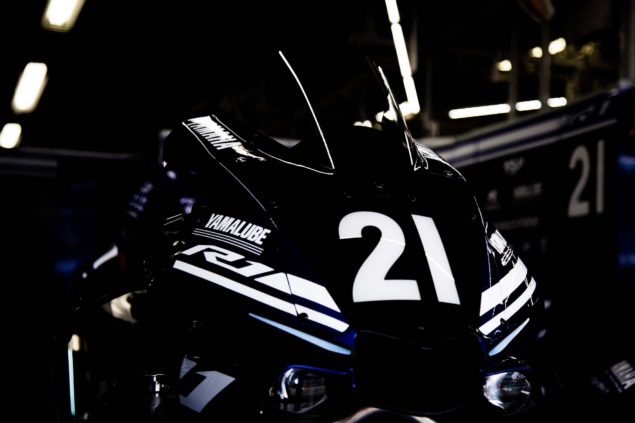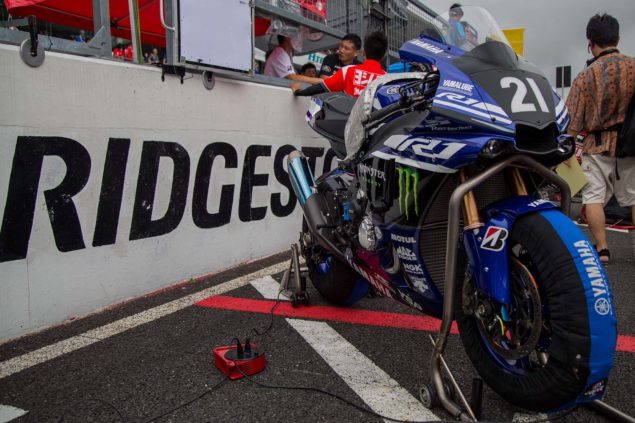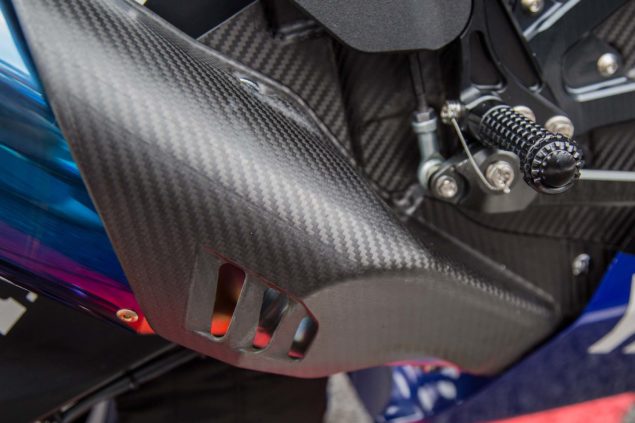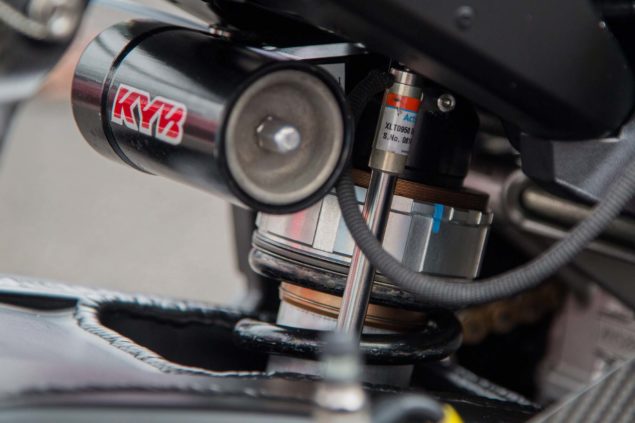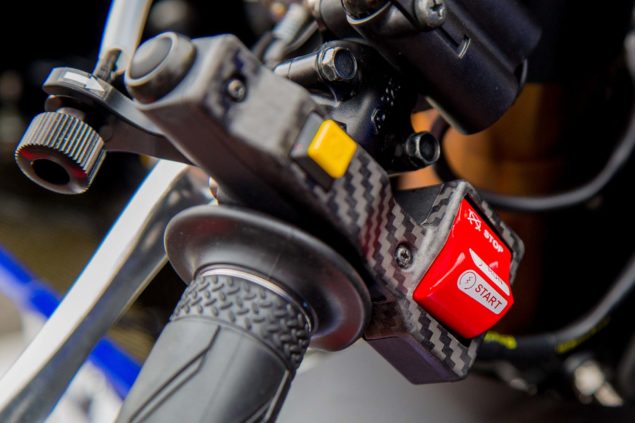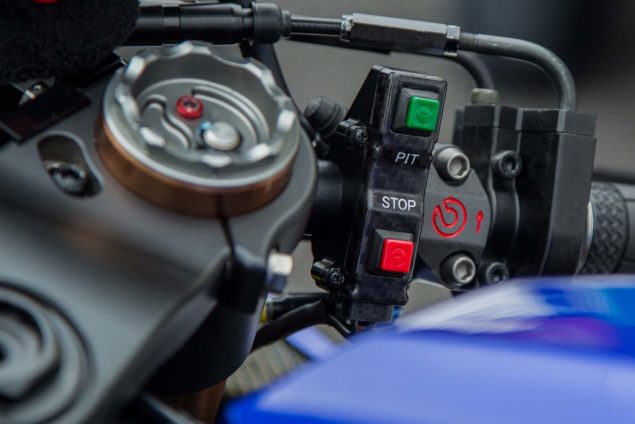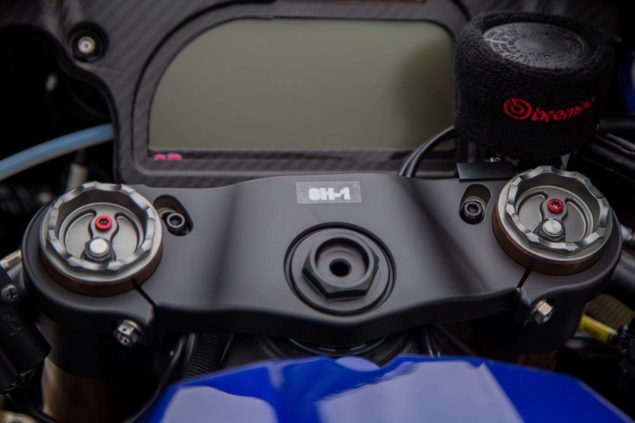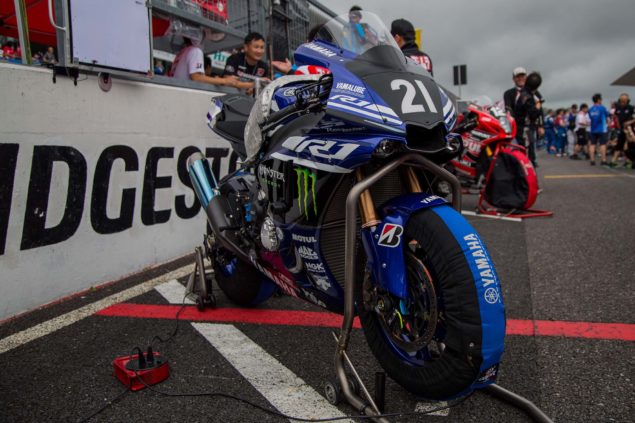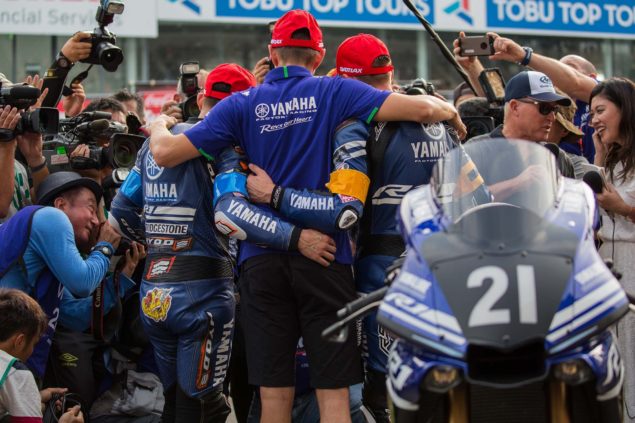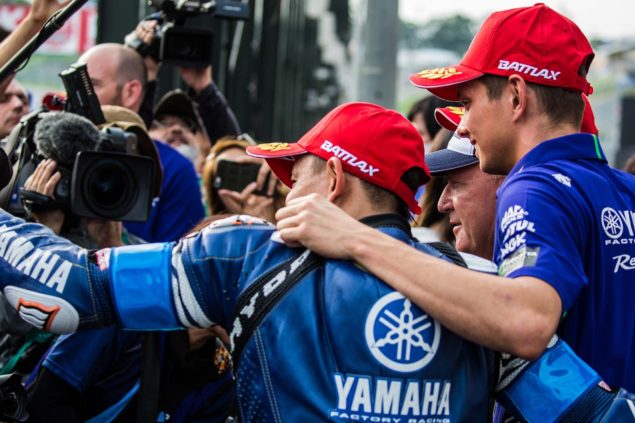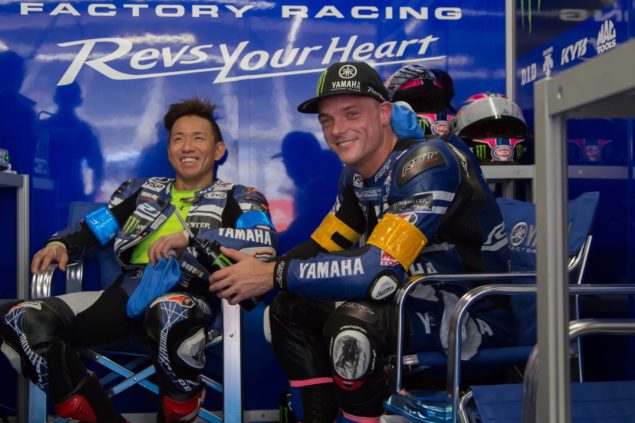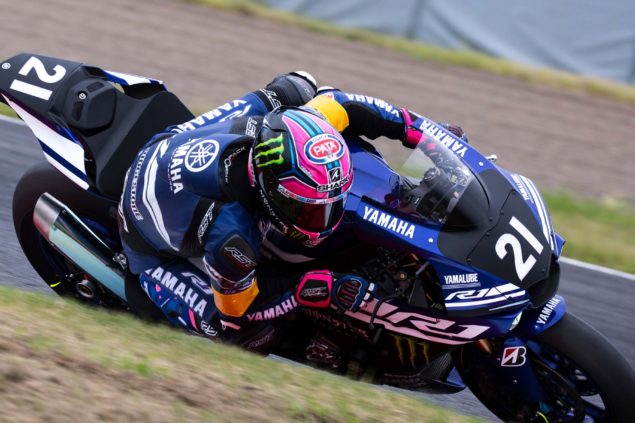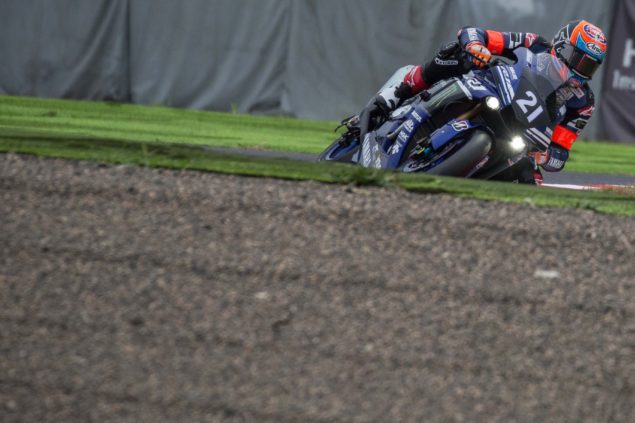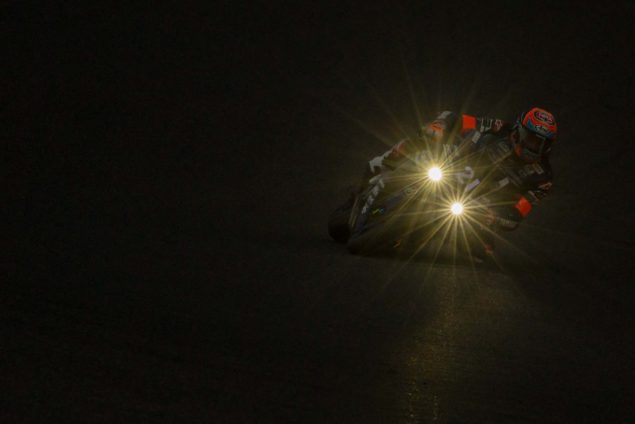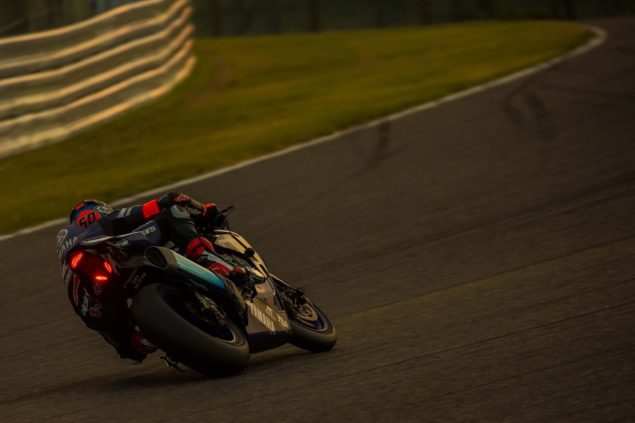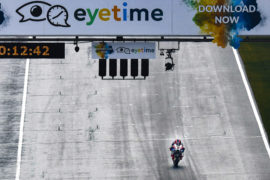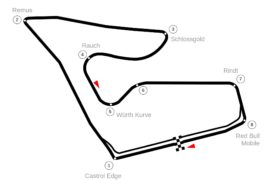The day is done and the battle is won. Yamaha claimed its third-consecutive Suzuka 8-Hours on Sunday.
The victory put a stamp on their dominance of the one race each year that the Japanese manufacturers place more emphasis on than any other. As such, Asphalt & Rubber takes a look at the winning machine, the Yamaha Factory Racing Team’s YZF-R1.
It’s often said that endurance racing is the last bastion of design and technological freedom in motorsport. Whether it was Audi’s decision to use a diesel engine on four wheels, or the current breed of two-wheeled endurance bike, i i’s clear that there is plenty of innovation on the grid.
At this weekend’s Suzuka 8-Hours, the Yamaha Factory Racing Team will field arguably the most advanced YZF-R1 on the planet.
With open regulations for electronics, a tire war, and plenty of scope for innovation in the rulebook, the machine that was raced by Alex Lowes and Michael van der Mark (along with Katsuyuki Nakasuga) is very different to their regular WorldSBK mount.
“It’s been really good to be able to compare the Suzuka bike to our WorldSBK bike back to back,” commented Van der Mark on the eve of the race. “When you race one, and then jump on the other to go testing, it really shows what each bike does well and where we maybe need to develop the WorldSBK bike.”
“The engines are different between the bikes, because the Suzuka machine has to last eight hours, but the electronics are very different. On the Suzuka bike, they are so smooth. There are some small differences, which make the bike feel easier to ride.”
“It still has the same character as the WorldSBK bike but it’s so much easier to control the power with the electronics on the Suzuka bike. I’d love to have that on my bike!” finished Van der Mark.
Everything on any racing machine is built with speed in mind, but in endurance racing it is also built with speed of maintenance in mind.
Being able to change wheels quickly, and to save time while repairing crash damage, is crucial. Any seconds gained in the pits are as precious as gold dust, and being able to work efficiently is a prized asset for any team.
Everything is designed with a tolerance for working with the minimum of intrusion. Compared to a WorldSBK or MotoGP bike, this Suzuka 8-Hour Yamaha YZF-R1 is designed with quick release mechanisms, and ease of work at the forefront.
Being able to replace a chain, top-up fluid, and even how fast you can hoist the bike on a paddock stand are all leading priorities rather than an afterthought – the focus remains on speed, but with more than a single eye on the stamina required to go racing over eight uninterrupted hours.
This year Yamaha was seeking a third consecutive victory in the blue-ribbon race. While the Endurance World Championship Yamahas will be shod with Dunlop tires, the Factory Racing Team will once again use Bridgestones.
This is a key advantage, with the Japanese rubber having been the tire to beat in the heat for years, and another insight into the challenge of endurance racing.
While we have grown accustomed to seeing control tires in MotoGP and Superbike racing around the world, it’s refreshing to see tire competition still play a part in racing.
For the riders, the tires provide a very different feel to their WorldSBK Pirellis – but performance is key and the Bridgestones certainly prove their worth.
The feedback from the Suzuka races played a role in the development of the MotoGP tires used up until 2015, and the feeling is very similar.
The Bridgetsone tires give a strong front-end feel, and plenty of confidence once they are into their operating window, but if they should fall out of that window there can be a high price to pay – and that’s when the ability to quickly repair damage returns to the fore.
With three riders on the bike, it will never be perfect for any one rider. The challenge is making sure it is a bike that all three riders are happy with.
For this year that meant that Yamaha has to adapt its rider positioning to suit van der Mark’s tall frame, compared to the smaller Lowes and Nakasuga – they had to change their requirements on setup as well, to find the best compromise for all of them.
In 2015, Yamaha’s first win of their recent successes, Bradley Smith was the “third rider” paired with Nakasuga and Pol Espargaro. It’s not a diminished role and is just as important as the other two, but as the Englishman explained, it did mean that he had a different task to undertake.
“There are three riders, and you don’t really ride that much,” said Smith. “I missed out on doing a lap in Superpole, which is hard to accept for any rider, but I was the third rider on the list all through the weekend.”
“Those types of things you have to take with a pinch of salt, and not take it too personally. We’re there for our team result not for our personal result,” Bradley continued.
“During testing and the race weekend, I spent a lot of time working on the tire and trying to understand which one was better. Some were going to be better for 20 or 30 minutes, but not for the whole hour.”
“That meant that I would tell the team the direction we should go with the tire, and then we’d change the setting to that direction because I was confident that that’s the right one and it paid off. Consistency is the most important thing.”
Endurance racing is a cycle; a study in risk assessment and stamina more than sheer speed. Go too slowly or too carefully, and you will be off the pace and not able to get close to the podium.
But risk too much, and you could be relying on your pit crew being able to work efficiently in getting the bike repaired. It’s all about compromise, and these bikes are the epitome of that compromise; built to be the best over 220 laps and thousands of kilometers – for the whole team.
Photo: © 2017 Steve English – All Rights Reserved
This Suzuka 8-Hours story is made possible by our A&R Pro members. If you like reading endurance racing stories on Asphalt & Rubber, you should consider supporting this content by signing up for A&R Pro.

